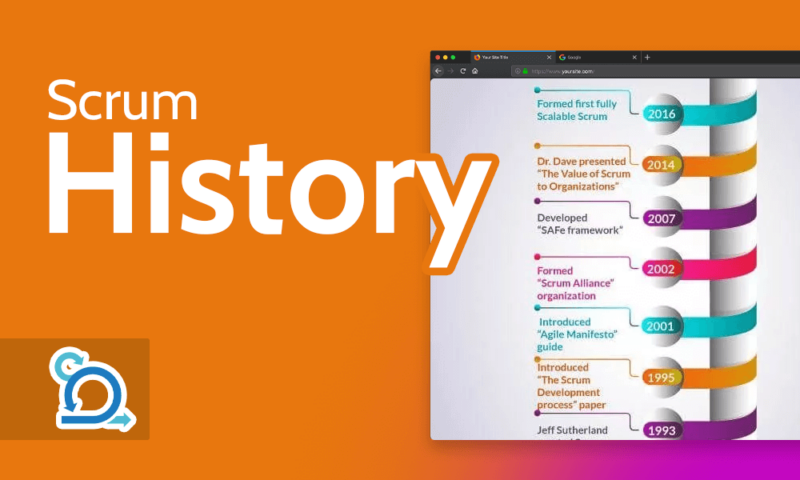Scrum History Lesson: The History of Scrum From 1986 to 2024
Scrum is one of the most popular Agile methodologies in software development, but who founded it, and how did it get its start? If you’ve always wanted to know the answer to these questions and more, sit back and learn all about the iterative process in our Scrum history guide.
Key Takeaways: What Is the History of Scrum?
- The term “scrum” was first used to describe project management in 1986, when two university professors published “The New New Product Development Game.”
- The first Scrum team was formed in 1993 by Jeff Sutherland, Jeff McKenna and John Scumniotales. However, Scrum didn’t make its first public appearance until 1995.
- Scrum continues to evolve, and the Scrum Guide, written by Jeff Sutherland and Ken Schwaber, is updated frequently.
It’s hard to imagine that one of today’s most efficient project management methodologies was born thanks to rugby. How in the world could one of the most popular methods of managing projects in IT and other industries sprout from a sport that uses a comically shaped ball? Stick around, and you’ll find out how and more in our Scrum history guide.
Below, we will tell the story of how two university professors stumbled across exciting new product development techniques and how four software developers turned those techniques into one of today’s most adaptable and flexible project management methods. Let’s dive right in.
Scrum History: A Timeline
Scrum may only have been around for three decades, but the Agile process has a fair amount of history behind it (if you’re unfamiliar with the topic, we suggest reading what is Agile first). From its inception in 1986 to today, where Scrum practitioners are easy to come by, the Agile process continues to break project management ground. Below, we will cover every significant event that has shaped Scrum.
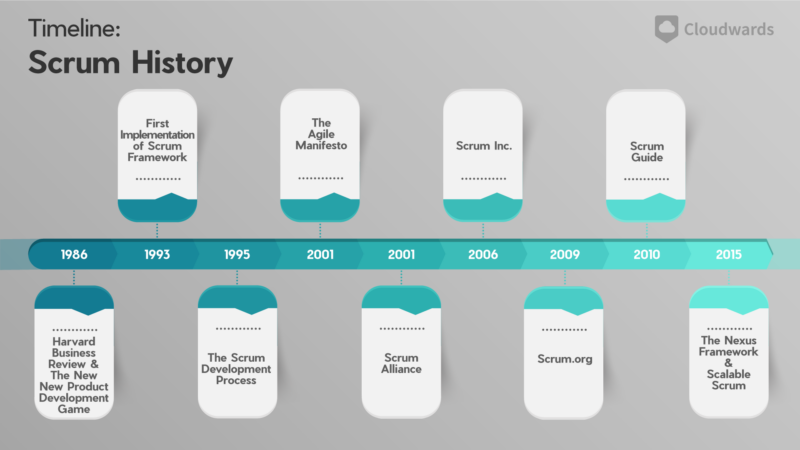
1986: Harvard Business Review & The New New Product Development Game
In 1986, two university professors — Hirotaka Takeuchi of Harvard and Ikujiro Nonaka of Hitotsubashi University — examined the work processes of several American and Japanese manufacturers (Canon, Fuji-Xerox, Honda, Epson, Brother, 3M and Hewlett-Packard).
How to Master Project Management
Even if You're New to the Field

- Discover 10 fundamentals of project management
- Understand step-by-step plans for PM execution
- Learn tips to avoid 5 common mistakes by beginners
The pair discovered each company was using a holistic approach to manufacturing that broke away from traditional methodologies.
The holistic approach had six key elements: built-in instability, self-organized teams, overlapping phases of development, multi-learning, subtle control and organizational transfer of learning. These six elements created a fast, flexible method for creating products.
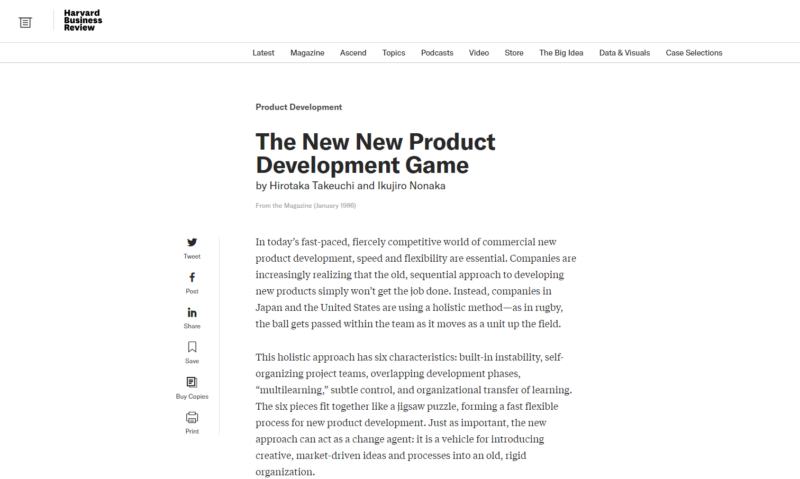
Takeuchi and Nonaka likened the method to a rugby scrum. In a scrum, a group of players works together to win the ball back for their team, and then each player plays a vital role as the team moves the ball down the pitch to score a “try.”
At this point, the project management methodology hadn’t been named Scrum, but its ties to the rugby play had been made. The professors wrote a paper entitled “The New New Product Development Game.” Their report covered the processes they had witnessed and got published by the Harvard Business Review.
1993: First Implementation of Scrum Framework
While word of the holistic approach to working was put on the map in 1986, it wouldn’t start to become popular until 1993. That’s when Jeff Sutherland, Jeff McKenna and John Scumniotales of the Easel Corporation first used it in software development.
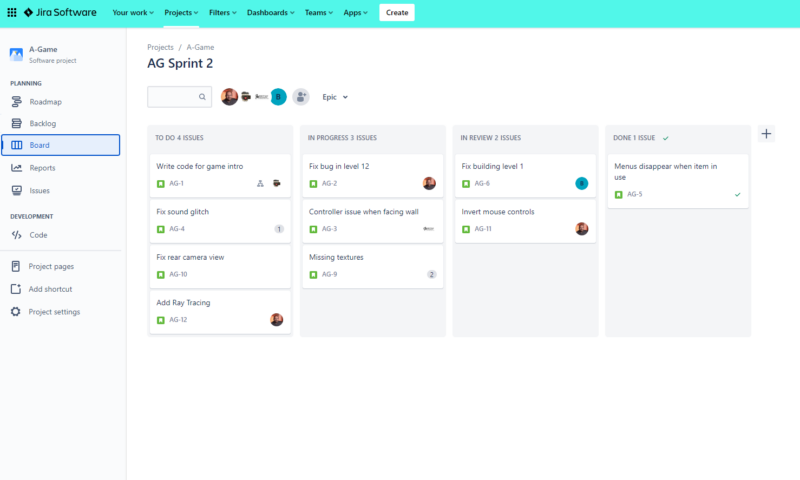
The group took the ideas from Nonaka and Takeuchi’s paper and tweaked the processes they already used. As a result, Scrum development started, and the first Scrum team was born.
1995: The Scrum Development Process
After two years of tweaking and formulating Scrum practices, Jeff Sutherland and Ken Schwaber jointly presented The Scrum Development Process during the Object-Oriented Programming, Systems, Languages and Applications (OOPSLA) conference in 1995. This paper would go on to become the standard reference guide for Scrum terminology.
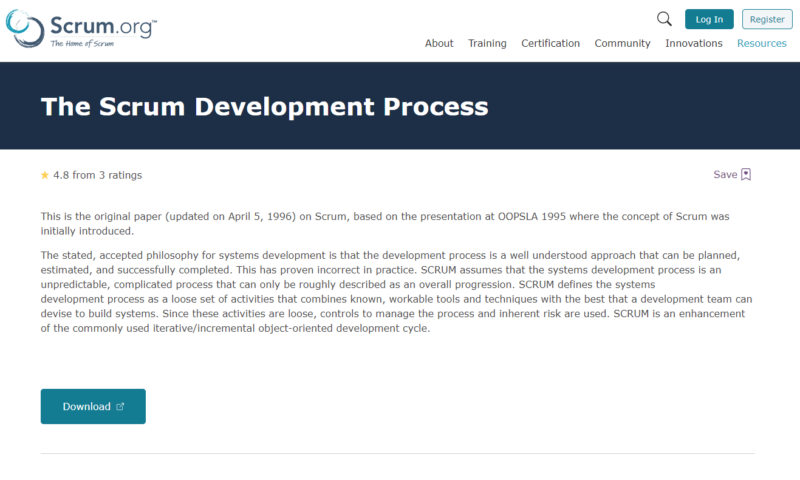
software was shared with the world in 1995.
2001: The Agile Manifesto
After years of fighting with rigid, document-intensive traditional project management approaches like Waterfall, software developers reached a breaking point. Jeff Sutherland and Ken Schwaber joined forces with 15 other programming evangelists to create a group called the Agile Alliance.
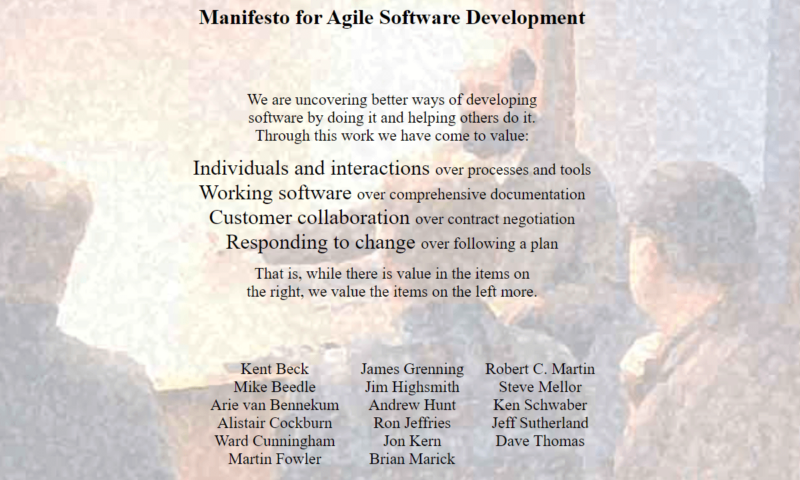
Together, the group produced the Agile Manifesto, a document that laid the foundation for Agile methodologies. The manifesto describes four values — interactions over processes and tools, working software over comprehensive documents, customer collaboration over contract negotiation and responding to change over following a plan — and 12 principles that Agile teams must follow.
2001: Scrum Alliance
In 2001, Ken Schwaber, Esther Derby and Mike Cohn created the Scrum Alliance. The Scrum Alliance’s mission as a consultancy and certification organization was to teach as many people about Scrum as possible. In the years following its founding, the organization created the popular Certified Scrum Master (CSM) certification — one of the best Scrum certification courses.

2006: Scrum Inc.
In 2006, Scrum co-creator Jeff Sutherland created his own company, Scrum Inc. Much like the Scrum Alliance, Scrum Inc. offered Scrum training courses and consultancy services. Sutherland went on to create the scalable Scrum@Scale framework, which helps companies spread Scrum methods over entire organizations.

Scrum Inc. continues to offer many courses for those wishing to pursue a career in Scrum. You can choose from Registered Scrum Master (RSM), Registered Product Owner, Registered Agile Coach, Registered Scrum@Scale Practitioner and more.
2009: Scrum.org
In 2009, after a falling out with the Scrum Alliance board of directors over certification paths, Ken Schwaber founded his own company, Scrum.org. Like the Scrum Alliance and Scrum Inc., Scrum.org started offering numerous Scrum training courses and certifications.
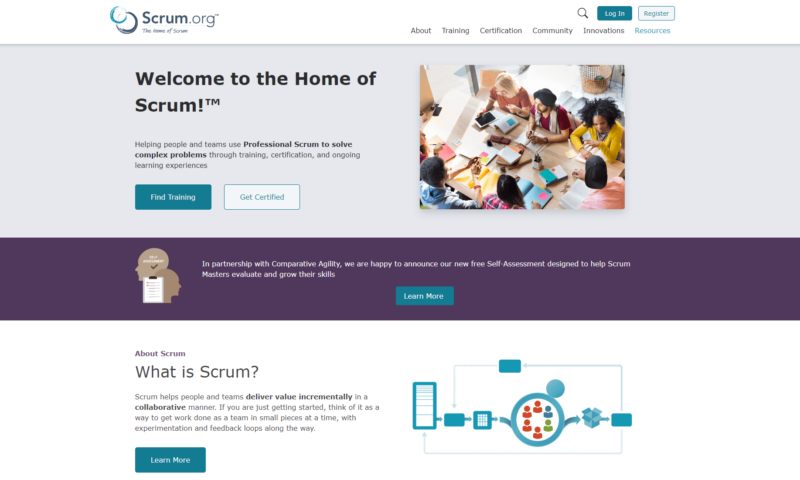
Scrum.org is known for offering the Professional Scrum Master (PSM), Professional Scrum Product Owner (PSPO), Professional Scrum Developer (PSD) and Professional Agile Leadership (PAL) certifications, among others.
2010: Scrum Guide
After previously taking separate paths, Jeff Sutherland and Ken Schwaber joined forces to create the first Scrum Guide. The pair wanted to clarify what Scrum is and how understanding the roles, events, artifacts and rules that define the methodology can help teams become more efficient. We also have a helpful What is Scrum guide that can help you understand these concepts.
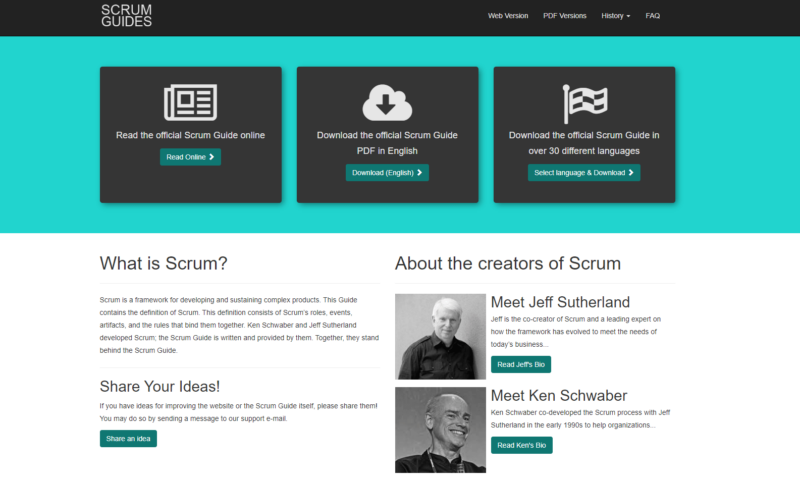
Schwaber and Sutherland’s Scrum Guide received global acclaim for its relaxed and easy-to-follow approach to teaching what can be a quite complex methodology. The Scrum Guide is updated fairly regularly, with the last major update being in 2020.
2015: The Nexus Framework & Scalable Scrum
We know that Jeff Sutherland created the Scrum@Scale method, which helps teams scale across organizations. However, in 2015, Ken Schwaber developed another scalable Scrum method, the Nexus Framework.
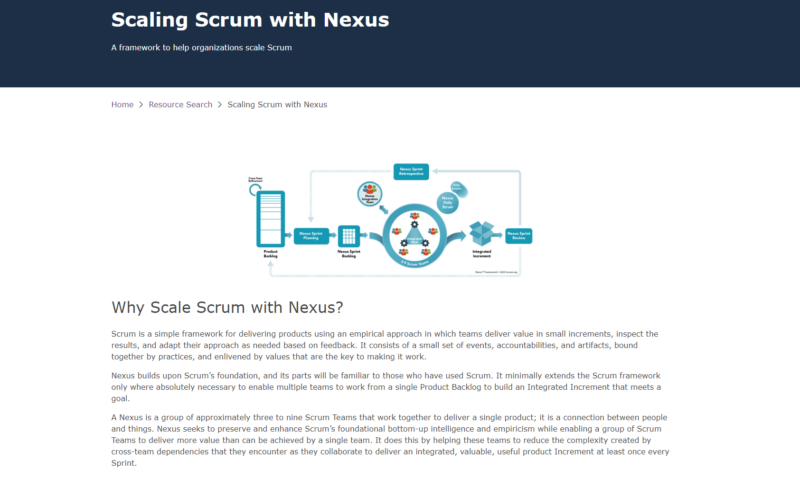
that want to use more than one Scrum team per project.
The Nexus Framework is for companies with multiple Scrum teams working on one product or project. As a side note, scaling Scrum (which is the art of getting multiple teams to work together) and the Scrum of Scrums (which is a meeting held between multiple teams) should not be confused.
Final Thoughts: History of Agile Software Development
Today, Scrum is one of the most popular Agile project management methodologies, thanks to its flexible, iterative and incremental way of working, use of cross-functional teams, frequent communication and customer-first approach. It may have been developed with software teams in mind, but it has been deployed by teams in many industries since its release.
If you’d like to learn more about the Scrum process, you should check out our articles that cover Scrum vs Agile, Scrum vs Kanban and Scrum retrospective meetings. We also have guides that cover the basics such as what is a sprint review and what is backlog refinement.
What do you think about Scrum’s history? Would you like to learn more about Scrum or perhaps some other methodologies? Let us know in the comments, and as always, thanks for reading.
FAQ: Scrum History Explained
The method was originally observed in 1986. However, the Scrum method wasn’t officially born until 1993 and wasn’t publicly announced until 1995.
Jeff Sutherland and Ken Schwaber are the co-founders of the method known as Scrum.
Non-traditional project management methods used by various manufacturing companies were first noted in 1986 and mentioned in the Harvard Business Review. In 1993, three developers adapted those methods to software development. The first iteration of Scrum followed in 1995. In 2001, Scrum adopted the values and principles of the Agile Manifesto.
